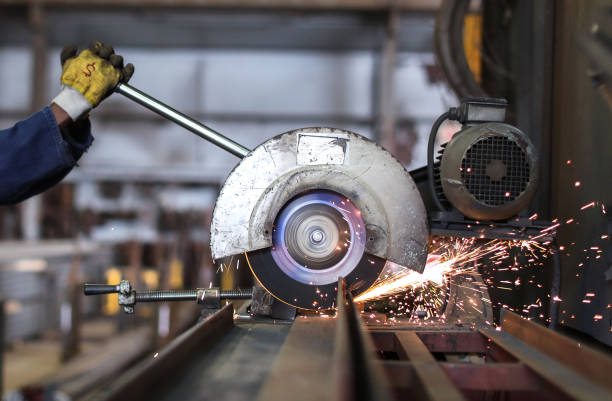
Your Complete Guide to Metal Cutting Methods, Tools, and Safety, Tools, and Safety Tips
Metal cutting is a fundamental process in manufacturing, construction, fabrication, and DIY metalworking. From building bridges to crafting custom motorcycle parts, the ability to shape and trim metal accurately is key to quality and functionality. Whether you're a seasoned professional or just starting out, understanding the various metal cutting techniques, tools, and safety practices is essential.

What is Metal Cutting?
Metal cutting refers to removing material from a piece of metal to create a desired shape or size. This can be done using mechanical tools, heat-based cutting methods, or even pressurized water. The method you choose depends on the type of metal, the thickness, your precision needs, and the tools available.
Metal Cutting Techniques Types
1. Mechanical Cutting
Mechanical methods are widely used in workshops and fabrication shops:
- Hacksaws, band saws, and cold saws are used for straight cuts.
- Drill presses and milling machines shape metal with rotating tools.
- Shearing machines cut sheet metal with a clean edge.
For more click here!
2. Thermal Cutting
Thermal Cutting processes use heat to melt and remove metal:
- Plasma cutting is fast and effective for cutting thick, conductive metals.
- Oxy-fuel cutting combines oxygen and fuel gas to slice through steel.
- Laser cutting offers precision, especially for thin materials or complex designs.
For more click here!
3. Waterjet Cutting
This uses high-pressure water, often mixed with abrasives, to cut through metal without generating heat. It's great for cutting thick or heat-sensitive materials like aluminum and titanium.
For more, click here!
Choosing the Right Cutting Method
When deciding how to cut metal, consider:
- Metal type and thickness
- Desired finish and tolerance
- Budget and equipment
- Need for speed vs. precision
| Cutting Method | Best For | Pros | Cons |
|---|---|---|---|
| Sawing | Straight cuts, DIY projects | Affordable, easy to use | Less precision |
| Plasma Cutting | Thick conductive metals | Fast, versatile | Rougher edges |
| Laser Cutting | Thin sheets, fine detail | Precise, clean cuts | Higher cost, not for thick metals |
| Waterjet Cutting | Heat-sensitive materials | No heat distortion, very accurate | Expensive and slower |
Metal Cutting Safety Tips
Safety is non-negotiable when working with metal:
- Wear protective gear: Gloves, goggles, and ear protection are essential.
- Secure your workpiece: Always clamp metal before cutting.
- Ensure proper ventilation: Especially when using plasma or laser cutting tools.
- Maintain tools regularly: Sharp blades and clean nozzles ensure safer, cleaner cuts.
The Role of Metal Cutting in Industry
From aerospace to automotive, it plays a crucial role. Advanced CNC machines and laser systems are used for ultra-precise fabrication. Even in small workshops, efficient metal cutting saves time, reduces waste, and boosts product quality.
As technology evolves, we’re seeing smarter tools that combine AI, automation, and digital design—pushing the limits of what’s possible with metal.
Conclusion
Mastering the cutting is essential whether you’re building a DIY project or running a machine shop. With the right technique and attention to safety, you can achieve clean, precise cuts every time.
Whether you’re using basic hand tools or high-tech machines, mastering metal cutting is a skill worth developing. Choose the right method for your needs, follow safety best practices, and always strive for precision.
As the industry grows, keeping up with new tools and trends can give you a competitive edge. Start with the basics, and you’ll be cutting like a pro in no time.
Keep learning, stay safe, and let the sparks fly—responsibly.

To know more about metal keeping in Nepal, visit this page!
